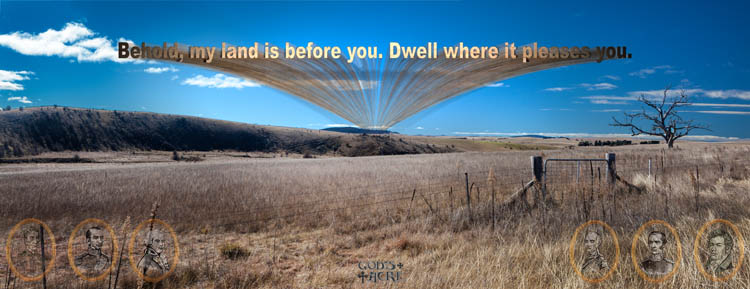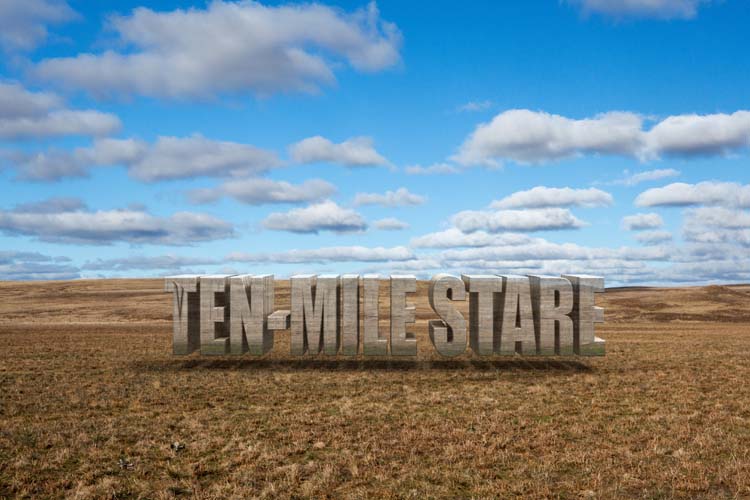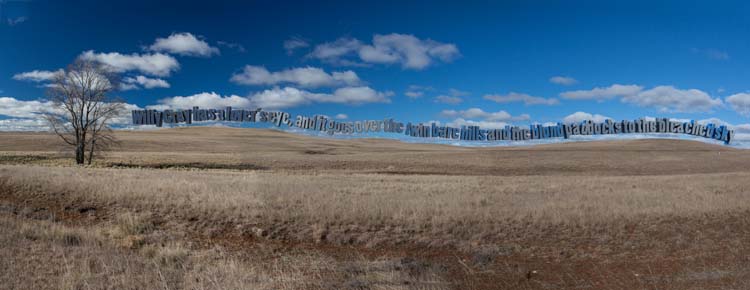The inclusion of text with this panoramic Monaro landscape image (along the Jindabyne-Dalgety road) fundamentally alters the image. From being simply a view of a specific rural landscape with a fence, a stark bare tree and a distant line of hills (and so largely functioning as representation) it becomes a site for the expression of ideas through symbols. It is generalised and recreated, no longer just one specific paddock but a field of meaning.
The specific text in the image is of biblical origin (Genesis 20:15, as Abraham arrives in the Promised Land), but was selected so as to also invoke a colonial vision of ‘taking up’ the land, with suggestions of terra nullius. The colonial reference is made explicit through the inclusion of a line of portraits of 19th century Governors of NSW – including Bligh, Macquarie, Gipps and the ‘Father of the Wool Industry’ John Macarthur. They look down from on high (in the sky) in a way which is intended to appear half like cameo portraits, half like gods looking down. The small ‘God’s Acre’ logo in the bottom tries to bring together that idea of the appropriation of the land having been undertaken with divine blessing.
The gate and fenceline running across the frame reinforces the notion of appropriation; this land belongs to its pastoralist owner, and is no longer public or available for other users.



